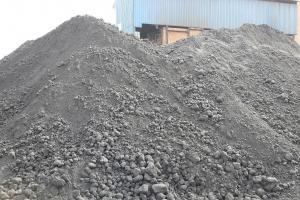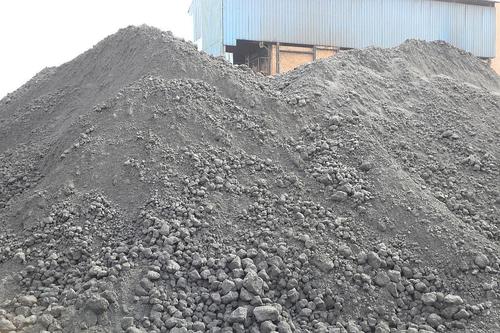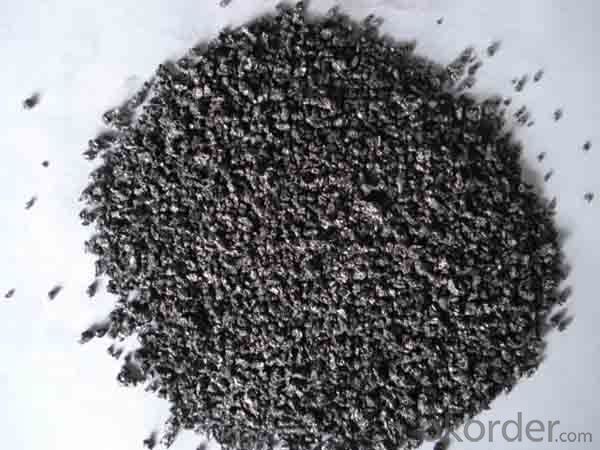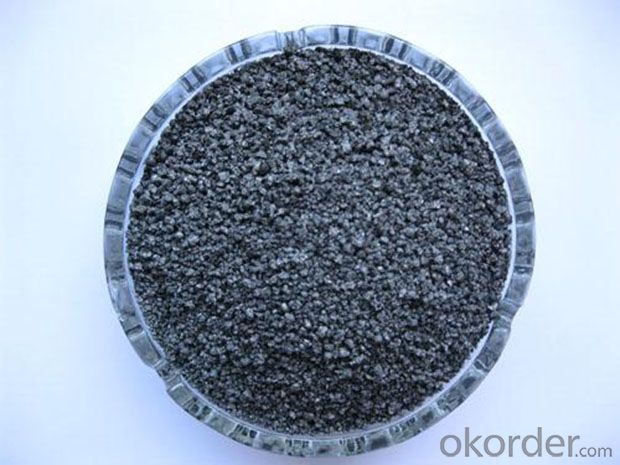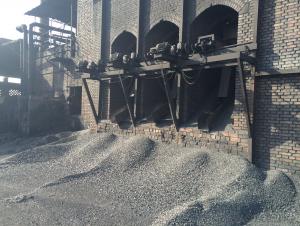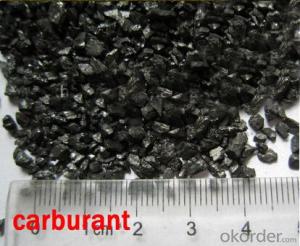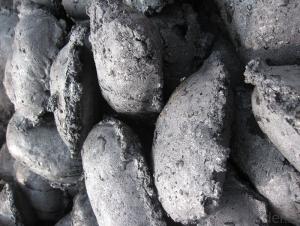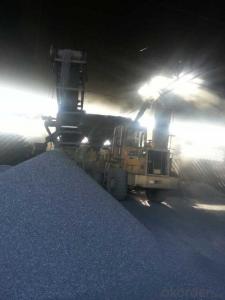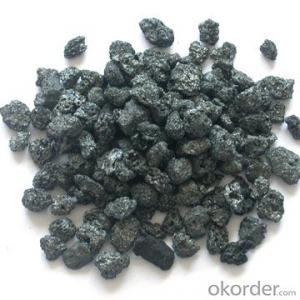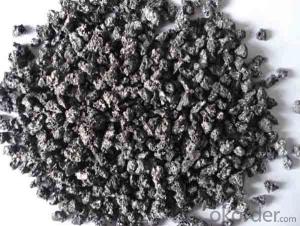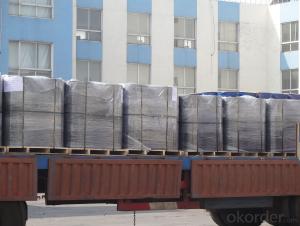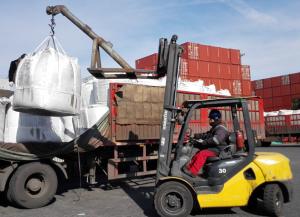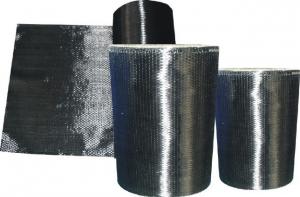Calcined Petroleum Coke/Carbon Raiser of CNBM in China
- Loading Port:
- Tianjin
- Payment Terms:
- TT OR LC
- Min Order Qty:
- 1 m.t.
- Supply Capability:
- 10000000 m.t./month
OKorder Service Pledge
OKorder Financial Service
You Might Also Like
1.Structure of Calcined Petroleum Coke Description
Calcined Petroleum Coke is made from raw petroleum coke,which is calcined in furnace at a high temperature(1200-1300℃).CPC/Calcined Petroleum Coke is widely used in steelmaking,castings manufacture and other metallurgical industry as a kind of recarburizer because of its high fixed carbon content,low sulfur content and high absorb rate.Besides,it is also a best kind of raw materials for producing artifical graphite(GPC/Graphitized Petroleum Coke) under the graphitizing temperature(2800℃).
2.Main Features of the Calcined Petroleum Coke
High-purity graphitized petroleum coke is made from high quality petroleum coke under a temperature of 2,500-3,500°C. As a high-purity carbon material, it has characteristics of high fixed carbon content, low sulfur, low ash, low porosity etc.It can be used as carbon raiser (Recarburizer) to produce high quality steel,cast iron and alloy.It can also be used in plastic and rubber as an additive.
3. Calcined Petroleum Coke Images
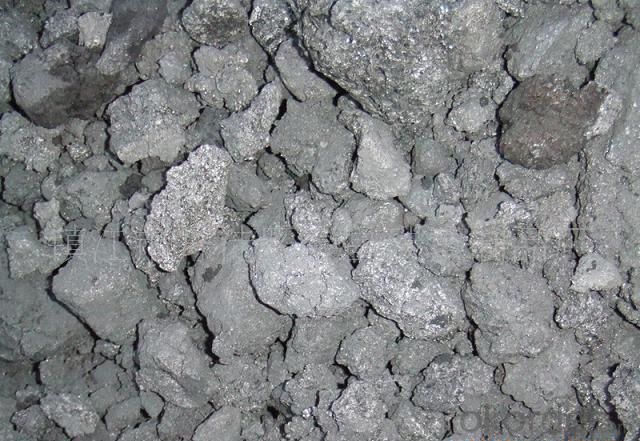
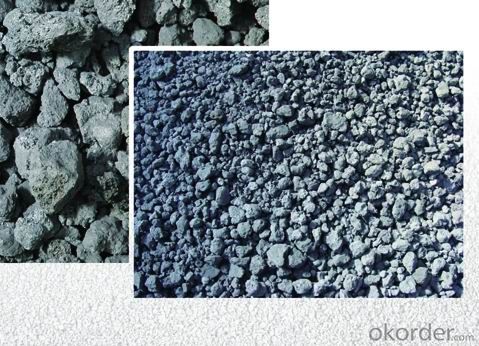
4. Calcined Petroleum Coke Specification
| Place of Origin: | China (Mainland) | Brand Name: | cnbm | Application: | Carrier Of Chemical Activator |
| Product Type: | Carbon Additive | C Content (%): | 91 | S Content (%): | 0.4 |
| Ash Content (%): | 5.5 | Volatile: | 1.5 | Size: | 1-5mm |
5.FAQ of Calcined Petroleum Coke
1). Q: Are you a factory or trading company?
A: We are a factory.
2). Q: Where is your factory located? How can I visit there?
A: Our factory is located in ShanXi, HeNan, China. You are warmly welcomed to visit us!
3). Q: How can I get some samples?
A: Please connect me for samples
4). Q: Can the price be cheaper?
A: Of course, you will be offered a good discount for big amount.
- Q: How does carbon form?speed
- How is coal formed?Coal is known as black gold, the food industry, it is one of the main energy use of the human world since eighteenth Century. Although its important position has been replaced by oil, but in the future for a long period of time, due to the exhaustion of petroleum, inevitable decline, but because of the huge reserves of coal, and the rapid development of science and technology, the new technology of coal gasification is becoming more mature and widely used, coal will become one of the production and life of human beings in an irreplaceable energy.Coal is millions of years of plant leaves and roots, stacked on the ground with a layer of very thick black humus, due to changes in the earth's crust constantly buried underground, long isolated from the air and under high temperature and pressure, after a series of complex physical and chemical changes and other factors, the formation of black however, this fossil, is the coal forming process.The thickness of coal seam in a coal mine and the crust drop speed and accumulation amount of plant remains. The crust decreased rapidly, the plant remains piled thick, the coal seam is thick, on the other hand, the crust decline slowly, the accumulation of plant remains thin, the mine coal seam is thin. The tectonic movement of the crust to the original level of coal seam folds and faults occur, some underground coal seam buried deeper, and squeezed to the surface, even above the ground, more likely to be found. There are some relatively thin coal seam, and the area is not large, so there is no value related to the formation of coal mining, so far not find the update statement.
- Q: What is the role of carbon in the formation of diamonds?
- The role of carbon in the formation of diamonds is essential, as diamonds are composed entirely of carbon atoms arranged in a crystal lattice structure. The extreme heat and pressure deep within the Earth's mantle cause carbon atoms to bond tightly together, forming the unique structure of a diamond. Without carbon, diamonds would not exist.
- Q: What is the role of carbon 60 in industry? Can it be interchanged with the chemical properties of carbon? What is the chemical structure of carbon 60?
- Used to strengthen metals; used as a new catalyst for storage of gases
- Q: What is the carbon content of different types of soil?
- The carbon content of different types of soil can vary significantly depending on various factors such as climate, vegetation, and land management practices. Generally, soils with higher organic matter content tend to have higher carbon content. Peat soils, for example, have the highest carbon content among all soil types, ranging from 30% to 60%. These soils are formed in wetland areas where the decomposition of organic matter is slow due to water saturation. As a result, large amounts of carbon accumulate over time. Forest soils also tend to have relatively high carbon content, varying between 1% and 10%. Forests provide a continuous supply of organic matter through litterfall, which contributes to the build-up of carbon in the soil. Agricultural soils, on the other hand, typically have lower carbon content compared to peat or forest soils. The carbon content of agricultural soils is influenced by factors such as crop rotation, organic amendments, and tillage practices. Depending on these factors, carbon content in agricultural soils can range from less than 1% to around 6%. Grassland soils may have carbon contents similar to agricultural soils, depending on the management practices. However, in undisturbed grasslands with high plant productivity, carbon content can be relatively higher, ranging from 2% to 8%. In arid and desert regions, soils tend to have lower carbon content due to limited vegetation and slower organic matter decomposition rates. Carbon content in these soils is often less than 1%. It is important to note that these ranges are generalizations, and the carbon content of soil can vary within and between soil types. Additionally, changes in land use, such as deforestation or conversion of grasslands to agriculture, can significantly impact the carbon content of soils.
- Q: What are greenhouse gases?
- Greenhouse gases, which encompass carbon dioxide (CO2), methane (CH4), nitrous oxide (N2O), and fluorinated gases, have the capability to trap heat within the Earth's atmosphere, thus contributing to the phenomenon known as the greenhouse effect. These gases occur naturally and are additionally released into the atmosphere through human activities such as the combustion of fossil fuels, deforestation, and industrial processes. The greenhouse effect plays a crucial role in maintaining the Earth's temperature at a level that supports life. Nevertheless, the excessive release of greenhouse gases has disrupted the atmospheric balance, resulting in global warming and climate change. It is imperative to reduce the emission of greenhouse gases and discover sustainable alternatives to alleviate the detrimental impacts these gases have on our planet.
- Q: How many electrons does carbon have?
- Carbon has 6 electrons.
- Q: Does iron have more carbon or more steel?
- Iron has a high carbon contentThe main difference is that the pig iron, wrought iron and steel carbon content, carbon content of more than 2% of iron is iron;
- Q: Is the hardness or softness of the steel with higher carbon content?
- With the increase of carbon content, the strength and hardness of steel increase, while the plasticity and toughness decrease. When the carbon content is more than 1%, the strength of steel decreases.
- Q: How is carbon used in the production of textiles?
- Textile production utilizes carbon in multiple ways, encompassing the utilization of carbon fibers, activated carbon, carbon black, and carbon nanotubes. Carbon fibers, for instance, serve as a lightweight and sturdy reinforcement for fabrics, enhancing their durability and performance. Activated carbon, known for its porous nature, finds extensive use in the textile industry due to its ability to adsorb and eliminate undesirable odors and chemicals. Consequently, it is employed in the manufacturing of sportswear, workwear, and specialized textiles where odor control is crucial. Additionally, carbon black, a finely powdered substance composed of carbon particles, functions as a pigment in textile printing and dyeing. By imparting a deep black hue, it is widely employed in the production of garments, upholstery, and other textiles requiring a dark coloration. Moreover, the development of carbon nanotextiles represents an innovative application of carbon in the textile realm. These textiles, fabricated from carbon nanotubes, exhibit exceptional properties such as high electrical conductivity and thermal stability. Consequently, they are ideal for applications involving wearable electronics, smart textiles, and conductive fabrics. In conclusion, carbon's incorporation into textiles through the integration of carbon fibers, activated carbon, carbon black, and carbon nanotubes contributes significantly to the strength, durability, odor control, coloration, and functionality of various textile types.
- Q: What are the different types of carbon-based air pollutants?
- There are several different types of carbon-based air pollutants that contribute to air pollution. These include: 1. Carbon Monoxide (CO): This is a colorless, odorless gas produced by the incomplete combustion of fossil fuels, such as gasoline, coal, and wood. It is highly toxic and can be harmful to human health, particularly when inhaled in high concentrations. 2. Carbon Dioxide (CO2): This is a greenhouse gas that is naturally present in the Earth's atmosphere. However, human activities such as the burning of fossil fuels and deforestation have significantly increased its levels, leading to climate change and global warming. 3. Volatile Organic Compounds (VOCs): These are organic chemicals that easily vaporize at room temperature. They are released into the air by various sources, including paints, solvents, gasoline, and industrial processes. VOCs contribute to the formation of ground-level ozone, which is a major component of smog and can be harmful to human health. 4. Methane (CH4): This is another greenhouse gas that is primarily produced by the decomposition of organic materials in landfills, as well as the extraction and transportation of natural gas. Methane is a potent greenhouse gas, with a much higher warming potential than carbon dioxide. 5. Polycyclic Aromatic Hydrocarbons (PAHs): These are a group of chemicals that are formed during the incomplete combustion of organic materials, such as coal, oil, and gas. PAHs are released into the air through vehicle exhaust, industrial processes, and the burning of fossil fuels. They are known to be carcinogenic and can have harmful effects on human health. 6. Formaldehyde (HCHO): This is a colorless gas that is used in the production of resins and plastics, as well as in some building materials and household products. It is released into the air through the burning of fuels, cigarette smoke, and the off-gassing of certain products. Formaldehyde is a known respiratory irritant and can cause allergic reactions and other health issues. These are just some of the carbon-based air pollutants that contribute to air pollution. It is important to reduce emissions of these pollutants through the use of cleaner technologies, energy-efficient practices, and the promotion of renewable energy sources to mitigate their negative impacts on both human health and the environment.
Send your message to us
Calcined Petroleum Coke/Carbon Raiser of CNBM in China
- Loading Port:
- Tianjin
- Payment Terms:
- TT OR LC
- Min Order Qty:
- 1 m.t.
- Supply Capability:
- 10000000 m.t./month
OKorder Service Pledge
OKorder Financial Service
Similar products
Hot products
Hot Searches
Related keywords
